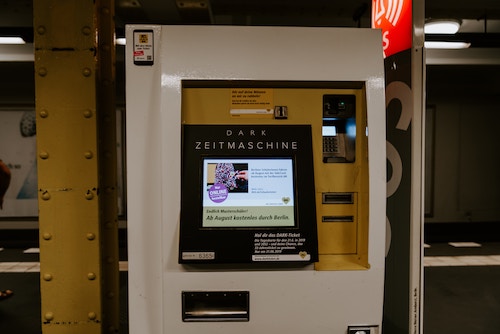Case study – Korean Grandma YouTube video.
Watch with subtitles. Title translates to: “A restaurant she can’t go even if she wants to”
The video linked above is of a famous YouTuber lady in her 70s filmed and edited by her granddaughter. The granddaughter takes her grandma to a fast-food chain where you have to order from a kiosk machine. Recalling her recent experience, grandma does not want to go. But eventually she starts craving this specific Korean burger, they end up there and the granddaughter documents her grandma’s journey of trying to get the burger she wants. It’s a frustrating video to watch on behalf of the grandma and even the granddaughter. They had to try together for the third time to get the burger they actually wanted.

After watching this video I interviewed some sample of middle age to elderly population who has had negative experiences with these technologies, there were these were negative psychological journey they went through:
First, they were scared. They were scared that they weren’t going to able to do it, they were going to hold up other people behind them,
and even if they finished it they were afraid they would waste money because they got the wrong thing.
Secondly it hurts their pride. Or it reminds them they are old and “out of touch“ front of this world and it makes them contemplate their mortality and alienation.
Lastly, they just purely miss human interaction at a basic level. They want to ask questions, ask for recommendations, customize the order if needed and assured that they can get feedback to their input. They need somebody to care enough to communicate rather than be pushed to face this indifferent giant of a machine.
Sure, this is a transition period for automated point-of-sale systems. I see any technological advancement has this life cycle: it has its infant stages where it serves very basic purpose, then a transition period where the ratio of benefit to effort is questionable, and the period where it really benefits people because it is so well developed it has caught up to humans. At the end, as its death period comes, it will start to generate side effects from overuse and misuse. With these kiosks we are still at a transition period.
Let’s think through the history of point of sale technologies.
1. First, there was cash interaction. The cashier machine with signature cha-ching sound: we can think of this was an infant kiosk technology.
2. The there was an Appearance of cashless payment methods like Credit cards.
3. Then the automated POS system came along but it needs a lot of human supervision. This is where
we are now.
4. Soon, there will be an automated POS system WITHOUT humans. This will coincide with analogous technologies also reaching the same cycle. Imagine cooking, serving, and delivery all being handled by robots; It’s actually at its infancy but is in working prototypes all over the world.5. And then maybe far in the future POS systems will have advanced so much that its interaction will not be distinguishable from actual humans. And then, if you haven’t already, go watch HBO’s West World…where a lot can go wrong. Even simple hacking of POS system can have many awful scenarios we can imagine that can damage someone financially, and emotionally.

At least in Korea, we are getting close to POS systems with no humans around. As the minimum wage laws are in hot debate and with dwindling job mar
ket many are jumping into their own retail or culinary businesses with assistance from the government. It’s not just big grocery chains and burger joints. Unless it’s one to two person operation, I see a lot of kiosks everywhere in small cafes and restaurants in Seoul. Some owners say it saves them so much labor, time and most importantly money. Even others who has suffered through some days where the kiosks gives them errors think it’s worth the trouble most of the times.
The problem is, we are not at number four. But there’s unique twist specific to Korea. It was only 66 years ago that this country was leveled to the ground with war.
But now it’s one of the most technologically advanced country, home of of the biggest tech brands, and with the most high internet speed in the world.
While it sounds good, this also means the technological experience gap between every generation is more steep than other countries.
Example of the famous YouTuber linked above, she was born just before the war. She went from having barely anything as a shelter, she arrived at a world where a robot takes an order for your burger. For some people, the technological advancement, the Moore’s law, whatever the speed of development is, isn’t fast enough. They feel alienated NOW.
Good UI designs can help. Perhaps there should be tailor-made interface for each comfort level. but I think it goes beyond just UI. The era of automation is inevitably coming and somehow we need a way to bridge the gap during this transitional period so that nobody who “feels elderly” nor don’t have to avoid certain cafes, restaurants or stores. This could be legislative taxes on kiosks or incentives for human workers for stores with kiosks so humans can share the workload with the machines, or some standard test, not unlike Turing test of sorts, for kiosk design company has to pass for the quality of interactions. I’m not an expert at legislation or engineering. But what I do know is there are segment of people who needs the human interaction who knows what it felt like to be young but they don’t anymore. As for people who are young now, we don’t know what it feels to be older yet. We need to be more empathic and be aware of those who feel sidelined in the society. And we need to start today.
